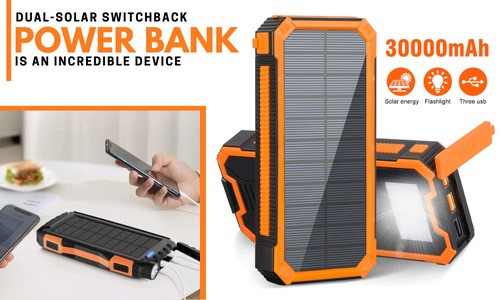The Importance of Regular Maintenance for Your Electric Vehicle
Proper maintenance is crucial for ensuring the optimal performance and longevity of your electric vehicle (EV).
Battery Care:
The heart of your EV, the battery, deserves special attention. Regular maintenance practices can mitigate battery degradation and extend its lifespan. Follow charging best practices, manage temperature fluctuations, and avoid overcharging to optimize performance.
- Brake System: Unlike conventional vehicles, EVs often feature regenerative braking systems. These systems require a different approach to maintenance. Regular checks and adjustments are essential for safety and performance.
- Fluids and Filters: Monitor brake fluid, coolant, and cabin air filters. Keeping these components in good condition ensures smooth operation and prevents costly repairs.
- Tire Upkeep: Regularly check tire pressure, rotate tires, and ensure proper alignment. Well-maintained tires improve efficiency and handling.
- Software Updates: Regularly update your EV’s software and apps. These updates enhance features, address bugs, and optimize performance.
- Cost-Effectiveness: Regular maintenance can catch small issues before they turn into expensive repairs. This not only saves money in the long run but also prevents unexpected breakdowns and inconvenience.
- Service Records: Maintaining a comprehensive service record can significantly enhance the resale value of your EV. Buyers are more likely to pay a premium for a vehicle that has been well-maintained and has documented service history.

Essential Maintenance Tasks for E-Bikes and Electric Scooters
1. Cleaning
Resources Needed: Soft cloth, mild soap, water, brush, bike cleaner, lubricant.
- Step 1: Remove Battery: Turn off the e-bike and remove the battery to avoid any electrical issues.
- Step 2: Rinse the Bike: Use a gentle stream of water to rinse off dirt and grime. Avoid using high-pressure water as it can damage electrical components.
- Step 3: Clean with Soap: Mix mild soap with water. Use a soft cloth or brush to clean the frame, wheels, and other parts. Avoid getting water into the electrical connections.
- Step 4: Dry the Bike: Use a dry cloth to wipe down the bike. Ensure all parts are thoroughly dried, especially the electrical components.
- Step 5: Lubricate Moving Parts: Apply lubricant to the chain, derailleurs, and other moving parts to keep them functioning smoothly.
2. Charging
Resources Needed: Manufacturer-recommended charger.
- Step 1: Use the Correct Charger: Always use the charger provided or recommended by the manufacturer to prevent damage.
- Step 2: Charge in a Safe Place: Connect the charger to the battery in a well-ventilated area. Avoid charging in extreme temperatures.
- Step 3: Monitor Charging: Keep an eye on the charging process. Avoid overcharging the battery by unplugging it once it's fully charged.
- Step 4: Store the Battery Properly: If not using the bike for an extended period, store the battery in a cool, dry place at around 50% charge to maintain battery health.
3. Tire Care
Resources Needed: Tire pressure gauge, pump, tire patch kit.
- Step 1: Check Tire Pressure: Use a tire pressure gauge to check the tire pressure regularly. Refer to the manufacturer's recommended pressure range.
- Step 2: Inflate Tires: Use a pump to inflate the tires to the correct pressure. Under-inflated tires can reduce range and performance.
- Step 3: Inspect for Damage: Regularly check tires for signs of wear, punctures, or damage. Replace tires if they are excessively worn or damaged.
- Step 4: Patch Punctures: If you find a puncture, use a tire patch kit to repair it. Follow the instructions on the kit for proper patching.
Electric Scooters Maintenance
1. Cleaning
Resources Needed: Soft cloth, mild soap, water, brush.
- Step 1: Turn Off and Remove Battery: Ensure the scooter is turned off and remove the battery if possible.
- Step 2: Wipe Down the Scooter: Use a soft cloth dampened with mild soapy water to wipe down the scooter. Avoid soaking it, especially around the electrical components.
- Step 3: Clean Wheels and Deck: Use a brush to clean the wheels and the deck. Remove any dirt or debris lodged in the wheel mechanisms.
- Step 4: Dry the Scooter: Use a dry cloth to thoroughly dry the scooter. Ensure all parts, especially the electrical components, are dry.
Battery Care Tips: Maximizing the Lifespan of Your E-Vehicle Battery
Proper charging habits and battery storage are essential for maintaining the health and longevity of your electric vehicle (EV) battery. Here are some key guidelines:
- Charge Between 20% and 80%: Keep your battery within this range for everyday use. Charging above 80% or below 20% can impact battery health. Lithium-ion batteries perform better when partially recharged each cycle.
- Avoid Consistently Charging to 100%: While it’s tempting to reach a full charge, doing so regularly can reduce battery lifespan. Charge to 100% only when preparing for longer trips.
- Level 3 Fast Charging: Use Level 1 or 2 charging for routine charging, as fast charging generates additional heat that can affect battery capacity. However, real-world tests show minimal capacity loss with fast charging
- Use the Right Charger: Always use the charger provided or recommended by the manufacturer to avoid overcharging and ensure proper voltage and current levels. When using public charging stations, prefer those that are known to be compatible with your EV model.
- Avoid Overnight Charging: Unless necessary, avoid leaving your EV plugged in overnight to minimize the risk of overcharging.
Battery Storage Tips
Ideal Storage Charge Level
- 50% Charge: If you need to store your EV or its battery for an extended period, aim to leave it at around 50% charge. This level helps minimize battery stress.
Storage Environment
- Temperature Control: Store the battery or EV in a cool, dry place. Avoid exposure to extreme temperatures (both hot and cold), which can degrade battery health.
- Ventilation: Ensure the storage area is well-ventilated to prevent moisture buildup and potential corrosion.
Regular Maintenance During Storage
- Periodic Checks: Check the battery charge level every couple of months. If the charge drops below 20%, recharge it to 50% to prevent deep discharge.
- Avoid Full Discharge: Never let the battery fully discharge during storage, as this can cause irreversible damage.
Disconnect if Possible
- Remove Battery: If feasible, remove the battery from the vehicle before storing it. This can help prevent any parasitic drain from the vehicle's electronics.
- Use a Battery Maintainer: For longer storage periods, consider using a battery maintainer (trickle charger) to keep the battery at a stable charge level without overcharging it.
Humidity Control
- Dry Environment: Store the battery in a low-humidity environment to prevent moisture-related issues. Use a dehumidifier if necessary.
Also Read: CHOOSING THE PERFECT ELECTRIC SCOOTER FOR YOUR NEEDS
Troubleshooting Common Electric Vehicle Issues
Common EV Troubleshooting Issues and Solutions
Electric vehicles are fantastic for the environment, but like any machine, they can encounter problems. Here are some common EV troubleshooting issues and solutions you can try:
1. Car Won't Charge:
- Solution 1: Check the cable and connections: Look for visible damage on the charging cable and connector on both the car and charging station. Try a different cable to see if the issue persists.
- Solution 2: Verify station functionality: Check the station's status lights and any error messages. If possible, try another charging station to isolate the problem.
- Solution 3: Restart the system: A simple reboot of your car's computer system can sometimes resolve glitches. Consult your owner's manual for specific instructions.
2. Slow Charging:
- Solution 1: Check power source: Ensure you're plugged into a reliable power source with sufficient amperage.
- Solution 2: Extreme temperatures: Very hot or cold weather can slow charging. Park in a moderate temperature if possible.
3. The Vehicle’s Range Has Decreased
- Driving Habits: Aggressive driving, rapid acceleration, and high speeds can reduce range. Drive more smoothly and at moderate speeds.
- Climate Control: Using the air conditioning or heater excessively can drain the battery faster. Try to use climate control sparingly.
- Tire Pressure: Under-inflated tires can reduce efficiency. Regularly check and maintain proper tire pressure.
- Battery Health: Over time, battery capacity can diminish. Check the battery health status through the vehicle’s diagnostics. If significantly degraded, consider consulting the manufacturer about battery replacement options.
4. Dashboard Warning Lights Activated
- General Warning Light: This could be related to a variety of issues, including electrical system faults. Check the owner’s manual for specific meanings of the warning lights.
- Battery Warning Light: Indicates a problem with the battery or its management system. Safely pull over, turn off the vehicle, and restart. If the light persists, seek professional assistance.
- Tire Pressure Monitoring System (TPMS) Light: This indicates that one or more tires may be under-inflated. Check tire pressures and inflate to the recommended levels.
5. Loss of Power:
- Solution: Check for any recent software updates that may be causing issues. Consult your manual for instructions on updating or resetting the system.
- Solution 2: If a reset doesn't help, contact a certified EV technician for further diagnosis.
6. Strange Sounds While Driving
- Tire Noise: Ensure tires are properly inflated and check for any damage.
- Motor Whine: A slight whine is normal in EVs due to the electric motor, but if the noise is unusually loud, it could indicate an issue with the motor or drivetrain. Seek professional inspection.
- Suspension or Brakes: Unusual noises can also originate from the suspension or brakes. Have these components inspected if you hear persistent strange sounds.
7. Infotainment or Navigation System Malfunctions
- Potential Causes and Solutions:
- Restart System: Turn off the vehicle and restart it to see if the issue resolves itself.
- Software Updates: Check for and install any available software updates that may address the issue.
- Factory Reset: As a last resort, perform a factory reset of the system as per the instructions in the vehicle’s manual.
8. Problems with Bluetooth, Wi-Fi, or Other Connectivity Features
- Restart Devices: Restart both the vehicle and the connecting device (e.g., smartphone).
- Re-Pair Devices: Delete the existing Bluetooth connection and re-pair the devices.
- Update Software: Ensure both the vehicle’s and the connecting device’s software are up to date.
9. Battery Temperature Warnings
- Driving Conditions: High-speed driving, steep inclines, and hot weather can cause the battery to overheat. Reduce speed and take breaks to allow the battery to cool.
- Cooling System: Ensure the vehicle’s cooling system is functioning properly. If you suspect an issue, have it inspected by a professional.

Where to Find Help and Support
If you’re seeking help and support for your electric vehicle (EV), Addmotor offers several ways to assist you:
Phone Support:
- You can call Addmotor’s customer service team at +1 888-660-0868 during their business hours.
- Business hours are as follows:
- Monday to Friday: 8:30 am to 5:30 pm PST
- Saturday: 10:00 am to 4:30 pm PST
- Sunday: 9:30 am to 2:00 pm PST
Email Contacts:
- For pre-sales inquiries, reach out to [email protected].
- If you have after-sales issues, email [email protected] (include relevant photos or videos).
- For business inquiries, use [email protected].
- For brand marketing and promotion opportunities, contact [email protected]
Website:
Visit Addmotor’s official website at Addmotor for additional resources and information.
Warranty Claims:
If your EV is under warranty and requires replacement parts, Addmotor has a specific process outlined on their website https://www.addmotor.com/pages/warranty. Here's a quick rundown:
- Contact customer service via email ([email protected] or [email protected]) describing the problem with your EV and include photo or video evidence if possible.
- Addmotor's mechanics team may request further diagnostics.
- Once approved, Addmotor will process your warranty claim and ship replacement parts within 10 business days.
- They will guide you through the process of replacing the parts in your EV.
Ride with Confidence: Ensure Your Electric Vehicle is Always Ready
Preventative maintenance is crucial for keeping your electric vehicle (EV) in optimal condition. Just like any ICE vehicle, prioritizing regular service appointments helps prolong the lifespan of your EV and ensures it functions optimally. Here are some important steps to maintain your EV:
Battery Care:
- Charge the Battery: Ensure your EV’s battery is fully charged before each ride. A well-charged battery maximizes speed and distance.
- Optimal Charging Range: Keep the battery charge between 60% and 80% for maximum efficiency.
- Avoid Overcharging: Be mindful not to overcharge the batteries, as it can lead to accidents.
Tire Pressure:
- Regularly check tire pressure. Properly inflated tires improve traction and stability on the road.
- Follow the manufacturer’s specifications for recommended tire pressure.
Brakes and Brake Pads:
- Inspect the brakes and brake pads. Ensure they are in good working condition.
- Replace worn brake pads promptly for safety.
Chain and Gears:
- Lubricate the chain and ensure smooth gear shifting.
- Well-maintained chains and gears contribute to a smoother ride.
Lights and Reflectors:
- Check that all lights and reflectors are functional.
- Especially important for night rides or low-light conditions.
Software Updates:
- Unlike ICE vehicles, EVs receive software updates (SOTA or FOTA) remotely.
- These updates enhance features and performance.
For specific resources related to Addmotor electric bikes, you can explore their Electric Tricycle Pre-Ride Maintenance Guide on their blog. Additionally, if you encounter any issues with Addmotor products, there’s a community forum where users share known problems and solutions.
























